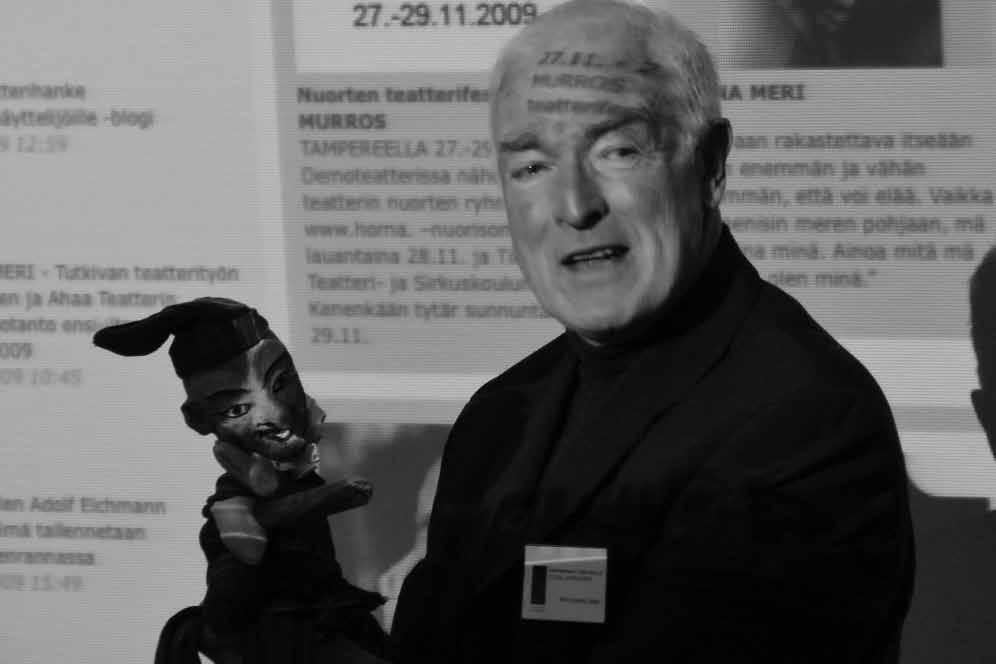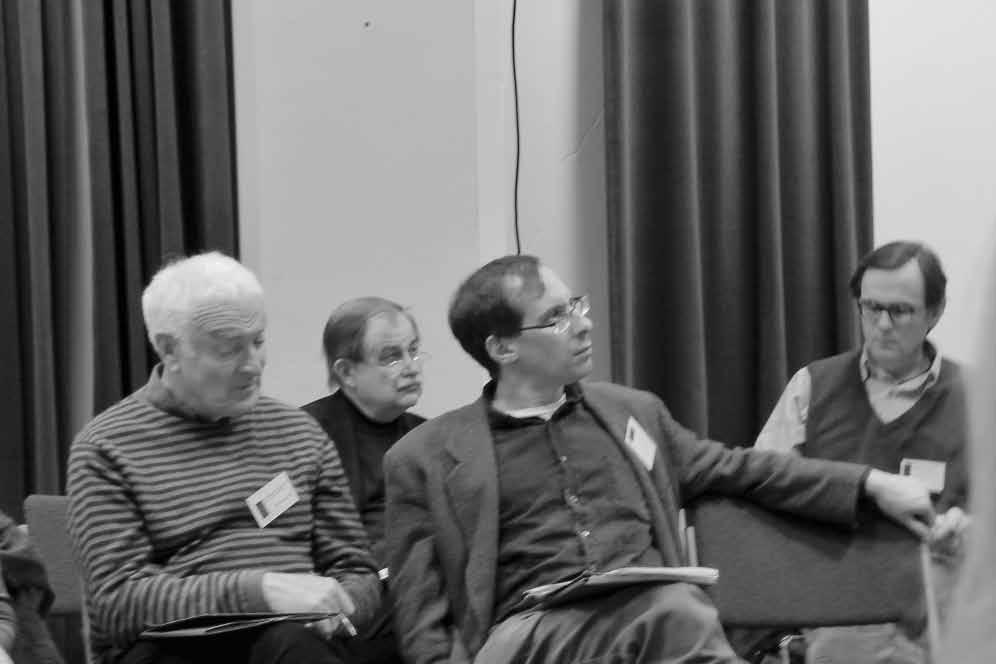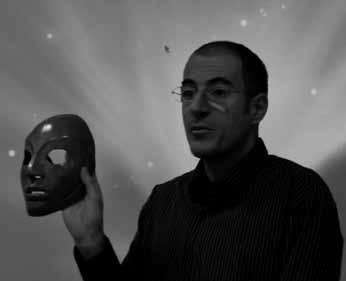
2 minute read
Report from conferense
With themes:
Advertisement
Puppetry as a modern art at the crossroads of scenic genres, or as traditional craft Puppet theatre as a part of a larger phenomenon and/or theatrical genre
Time: 29.-30.10.2009
Place: The Centre for Practise as Research in Theatre, Hämeenpuisto 28 D, Tampere, Finland (http://t7.uta.fi/en) Organizers: University of Tampere: The Centre for Practise as Research in Theatre University of Tampere: Arts Department / Theatre and Drama Research Doctoral Program of Music, Theatre and Dance Supported by Tampere City / Department of Culture. Along with the arrangements: UNIMA Finland Working group: Members of The Centre for Stage Animation Research Katriina Andrianov, Riku Laakkonen and Teemu Paavolainen. For whom: The event was targeted especially to researchers and students of theatre, but was open for anyone interested. The 60 participants came from 14 countries: Canada, China, Finland, France, India, Ireland, Latvia, Slovakia, South-Africa, Switzerland-Italy, Russia, Turkey, U.K. and U.S.A. Among the participants were students from Tampere University / Theatre and Drama Research, Helsinki Theatre Academy, Tampere University of Applied Sciences / Programmes of Sound, Light and Animation and Turku Uni-
John MacGormick asked Is puppetry Theatre?
versity of Applied Sciences / Department of Puppet Theatre. The language of the conference was English. No registration fees. Significance: The first scientific event of stage animation ever held in Finland. Objectives: The conference offered the field of research in question, young in Finland, an opportunity of a high level presentation. The notion of stage animation is not well known in Finland and understanding puppet theatre is often restricted only to a narrow sector of the whole genre. Acknowledging the significance of tradition, the conference tried to extend and diversify the idea of this art form of which – in its different manifestations – an inanimate object becoming animate(d) is characteristic. All the presentations (scientific, artistic) were documented and, as far as possible, they will be published with the speakers’ / performers’ permission by the Research Commission of UNIMA International. The experiences of the organizing parties and the participants’ feedback will be utilized in developing artistic and scientific research of stage animation further. Programme: The event consisted of 8 lectures, one lecture-demonstration, one film, three performances and two demonstrations. Five (5) of the speakers belong to the Research Commission of the International UNI-












